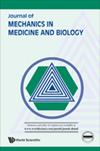ISC-Transunet:基于自注意与卷积融合的医学图像分割网络
IF 0.6
4区 医学
Q4 BIOPHYSICS
引用次数: 0
摘要
在当前的医学图像分割网络中,CNN与Transformer的结合已成为主流趋势。然而,卷积运算在CNN中固有的局限性和Transformer中信息交互的不足影响了网络的分割性能。为了解决这些问题,本文提出了一种集成自关注和卷积医学图像分割网络(ISC-TransUNet)。该网络由编码器、解码器和跳接组成。首先,编码器采用僵尸网络和变压器的混合结构来捕获更全面的图像信息,减少额外的计算开销。然后,解码器使用由多个DUpsampling上块级联的上采样器来准确恢复像素级预测。最后,通过ResPath跳转连接实现了不同分辨率下编码器和解码器的特征融合,减小了编码器和解码器之间的语义差异。通过在Synapse多器官分割数据集上的实验,与基线模型TransUNet相比,ISC-TransUNet的Dice相似系数提高了1.13%,Hausdorff距离缩短了2.38%,且权重保持不变。实验结果表明,该网络能有效分割医学图像中的组织和器官,对临床智能诊疗具有重要的理论意义和应用价值。本文章由计算机程序翻译,如有差异,请以英文原文为准。
ISC-Transunet: Medical Image Segmentation Network Based on the Integration of Self-Attention and Convolution
In the current medical image segmentation network, the combination of CNN and Transformer has become a mainstream trend. However, the inherent limitations of convolution operation in CNN and insufficient information interaction in Transformer affect the segmentation performance of the network. To solve these problems, an integrated self-attention and convolution medical image segmentation network (ISC-TransUNet) is proposed in this paper. The network consists of encoder, decoder and jump connection. First, the encoder uses a hybrid structure of BoTNet and Transformer to capture more comprehensive image information and reduce additional computing overhead. Then, the decoder uses an upper sampler cascaded by multiple DUpsampling upper blocks to accurately recover the pixel-level prediction. Finally, the feature fusion of encoder and decoder at different resolutions is realized by ResPath jump connection, which reduces the semantic difference between encoder and decoder. Through experiments on the Synapse multi-organ segmentation dataset, compared with the baseline model TransUNet, Dice similarity coefficient of ISC-TransUNet was improved by 1.13%, Hausdorff distance was reduced by 2.38%, and weight was maintained. The experimental results show that the network can effectively segment tissues and organs in medical images, which has important theoretical significance and application value for intelligent clinical diagnosis and treatment.
求助全文
通过发布文献求助,成功后即可免费获取论文全文。
去求助
来源期刊

Journal of Mechanics in Medicine and Biology
工程技术-工程:生物医学
CiteScore
1.20
自引率
12.50%
发文量
144
审稿时长
2.3 months
期刊介绍:
This journal has as its objective the publication and dissemination of original research (even for "revolutionary concepts that contrast with existing theories" & "hypothesis") in all fields of engineering-mechanics that includes mechanisms, processes, bio-sensors and bio-devices in medicine, biology and healthcare. The journal publishes original papers in English which contribute to an understanding of biomedical engineering and science at a nano- to macro-scale or an improvement of the methods and techniques of medical, biological and clinical treatment by the application of advanced high technology.
Journal''s Research Scopes/Topics Covered (but not limited to):
Artificial Organs, Biomechanics of Organs.
Biofluid Mechanics, Biorheology, Blood Flow Measurement Techniques, Microcirculation, Hemodynamics.
Bioheat Transfer and Mass Transport, Nano Heat Transfer.
Biomaterials.
Biomechanics & Modeling of Cell and Molecular.
Biomedical Instrumentation and BioSensors that implicate ''human mechanics'' in details.
Biomedical Signal Processing Techniques that implicate ''human mechanics'' in details.
Bio-Microelectromechanical Systems, Microfluidics.
Bio-Nanotechnology and Clinical Application.
Bird and Insect Aerodynamics.
Cardiovascular/Cardiac mechanics.
Cardiovascular Systems Physiology/Engineering.
Cellular and Tissue Mechanics/Engineering.
Computational Biomechanics/Physiological Modelling, Systems Physiology.
Clinical Biomechanics.
Hearing Mechanics.
Human Movement and Animal Locomotion.
Implant Design and Mechanics.
Mathematical modeling.
Mechanobiology of Diseases.
Mechanics of Medical Robotics.
Muscle/Neuromuscular/Musculoskeletal Mechanics and Engineering.
Neural- & Neuro-Behavioral Engineering.
Orthopedic Biomechanics.
Reproductive and Urogynecological Mechanics.
Respiratory System Engineering...
 求助内容:
求助内容: 应助结果提醒方式:
应助结果提醒方式:


